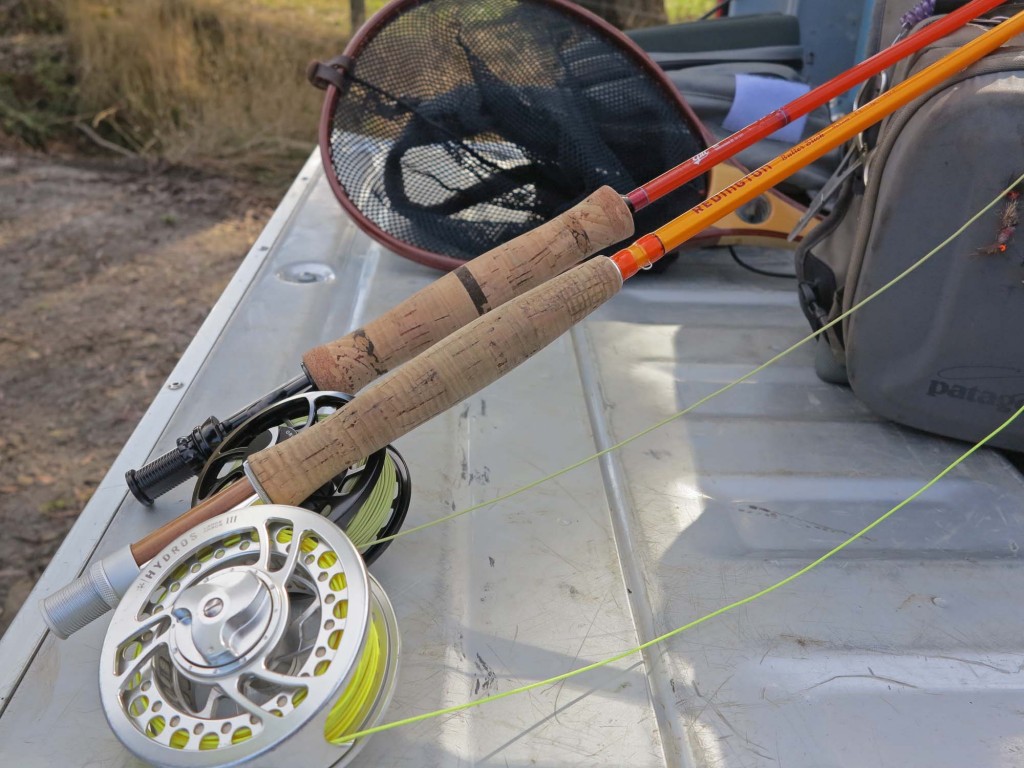Fibreglass rods are back! In the last thirty years, glass technology has changed a lot – from the equivalent of heavy woven matting, glass technology now uses single direction fibres, resulting in crisp and lightweight rods – so much so that a glass rod now weights about as much as a carbon fibre equivalent.
So why bother with glass anyway? Fibreglass is a brilliant material for building slow action rods, and using in situations where you want tight loops but slower line speeds. In anotherwords, accurate but delicate presentations. Glass also has another advantage – indestructability. You can almost wrap these rods from end to end without a worry, making them prefect for pulling lunker trout out of creeks, whilst protecting lightweight tippets. Besides that, the retro glass look is pretty bloody cool.
How does the Redington Butter Sticks go? I’ve got to use two rods in the range so far: the 580-3 which I chose for Tassie small streams and rivers, and the 370-3 as a go-to creek rod. The 580-3 is dead slow, slower than my cane rod, and ideal for 10-40 foot. And I don’t say 10 foot flippantly – we catch so many of our fish within a rod length or two, but so often this is the hardest distance to cast. But that’s the advantage of slow-action glass: precision and easy loading up close. Beyond 40′ I struggled a bit, but a lighter fly line with a longer belly soon fixed this, and both dries and tungsten nymphs were used. The 370-3 on the otherhand has a more modern, medium-fast taper, and is an easy rod for casual casters. I even overlined this rod with a five weight line, and still got the line singing. This is a serious creek rod, perfect for short to medium casting, and quite versatile if you find yourself in the wind, or having to cast longer distances on bigger streams. For $399, it’s a top-notch creek rod, at blue collar prices. So there you have it, a ripper dry fly rod, and a cracking creek rod. Come in and check them out, or find them for sale online here
The Butter stick’s come with a lifetime warranty

